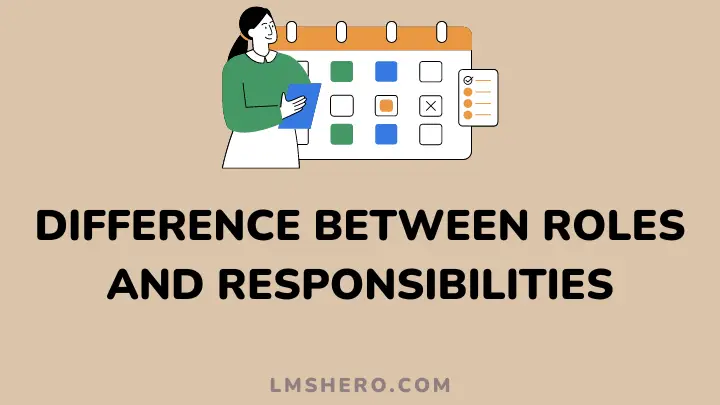Education is important, but it might cost you a fortune. Financial aid can be a touchy subject. Some people are almost in tears when they ask, while others may seem aggressive.
Whatever your case is, it’s important to talk about it to avoid any problems in the future. Forthright, without it, many students would not be able to attend university due to the expense.
Financial aid is a combination of scholarships, grants, loans, and work-study programs designed to help cover the cost of attending an educational institution.
Financial aid can be a confusing topic and I don’t want you to feel overwhelmed. I will try to answer the most common and popular questions concerning financial aid in an understandable way.
What is Financial Aid?
Financial aid is a term used to describe the many different sources of funds that students can draw from to help fund their education. Among the various options are grants, scholarships, loans, and work-study programs.
A student can use this money at any accredited post-secondary institution in the United States (including private colleges or junior colleges).
However, each has very specific requirements and restrictions. Thus, students need to understand how all of this works to meet their full financial aid eligibility.
How Does Financial Aid Work?
Getting the financial aid you need for your higher education can be a daunting, confusing process.
Understanding the different programs available to you can help demystify what kinds of aid are available and how to figure out if you qualify for them.
The process varies among colleges and universities, but financial aid is always based largely on income, family size, and assets. It includes grants, loans, scholarships, and work-study help. It may also be awarded based on financial need or merit (your academic and/or athletic achievements).
These applications require you to provide information about your family’s income and assets. This information determines whether you are eligible for aid.
Upon determining your eligibility, a letter or email stating your award amount will be sent to you. You will receive a financial aid award letter outlining the total amount of money that you will receive as well as the breakdown of that amount.
The key to understanding financial aid is that it doesn’t repay itself. Students must pay back tuition assistance from their earnings after college graduation.
Financial Aid and Why You Might Need It
Financial aid is anything that reduces the amount of money you’ll have to pay for education expenses at any college, trade school, or other postsecondary institution.
Even if your parents have enough money to pay for college and you don’t want student loans, these programs can still help you.
This has a lot of benefits, such as extra money for books and supplies, an allowance while studying at school, less stress about paying your tuition when it’s due, a lighter student loan obligation after graduation, and so forth.
What Types of Financial Aid Can You Get?
1. Grants
As a student, you can receive a grant to assist with paying for college. There is no need for repayment.
A grant can come from the federal government, a state government, or an educational institution.
Various types of grants are available, including those for low-income families, minority students, and students with disabilities.
2. Scholarship
Scholarships are awards of financial assistance for students to further their education. Academic merit, financial need, athletic skills, or a combination of these factors determines who receives scholarships.
Academic abilities, leadership qualities, outstanding personality, and special contributions qualify for this award. It is a privilege to be a whiz kid since it is not only a means of funding your degree or program but also a mark of honor and recognition.
3. Loans
Some of the most useful financial aid may be in the form of loans. Loans can be helpful, especially when you are going to college and have limited funds.
However, the trouble with loans is that they must be paid back. Loans can be taken out at school, or you may even be able to apply for a loan while still in high school. There are two types. They are:
Federal loan
The federal student loan is an easy way to pay for higher education. With the federal student loan, you may be able to borrow up to $12,500 a year (according to your year in school and dependency standing).
You do not have to be in financial need to receive a federal student loan. As a general rule, repayment does not start until you graduate or drop below half-time enrollment. You are also covered by interest until then.
Private loan
Private loans are available from a range of places. Their interest rates are high, and you have to pay the interest even if you don’t pay back the loan.
Unlike federal loans, many private loans are not eligible for help if you can’t pay. Repayment is usually due soon after the loan is taken out, and you have to pay all of the interest.
4. Work-study
This federal program gives money to college students so they can have jobs on campus. It will pay the students a normal amount of money, but the college gives them more money because it is federal money. The money can be used to pay for food or books.
The work-study program will give each student a certain number of hours they are allowed to work per week. If a student is poor, the student can earn more money by working more hours.
Categories of Financial Aid
Need-based
A need-based grant is a donation that does not have to be repaid and is awarded based on the financial needs of the student.
You and your family will fill out the Free Application for Federal Student Aid (FAFSA) to determine if you qualify for government financial aid for college. It’s not fun because you have to be very truthful and it takes a long time.
Depending on the school, you may be required to complete a CSS/Profile application.
Students and their families need to fill out these applications to determine what their Expected Family Contribution (EFC) will be for one academic year.
You must reapply for financial aid each year of college since colleges calculate your financial need annually.
Merit-based
Merit-based financial aid includes scholarships, grants, and tuition remission and depends on the student’s performance. Aid can be granted by various sources, like governments, institutions, or individuals.
Students with high-merit academic records and good extracurricular activities are often granted scholarships from their respective universities or other sources like organizations etc.
How to Get Financial Aid
One thing that many people have trouble understanding is what financial aid is and what it can do for you.
The important thing to remember is that the financial assistance you need is all the money that you do not have to pay back. The first step toward getting financial aid is understanding the basic steps in its application process.
My piece of advice is to look for free money first. By “free money,” I mean money that you do not have to repay. Perhaps a grant or scholarship based on your grades or proficiency as an athlete.
However, it might not be enough to cover all your costs. If you cannot get this, then you have to source federal financial assistance.
To be eligible, a student has to meet three general requirements: be enrolled in an eligible educational program at the college or university; be a U.S. citizen or an eligible non-citizen; and maintain satisfactory academic progress at the school.
Financial aid is designed to enable students to pursue education beyond high school. In federal and state programs, you may have to deal with eligibility status as well as with schools that have different types of financial aid.
When Should You Start Applying for Financial Aid?
The best time to apply for financial aid is at the beginning of a student’s junior year of high school. This helps ensure that you will have enough time to apply for loans, grants, work-study programs, and scholarships.
You can still apply for scholarships and grants after you are accepted by colleges, as paying for school can be a challenge.
There are still ways for you to pay for your education when you’re in college. While it takes time, it can be done. Each year, you must reapply for government financial aid if you wish to continue receiving it.
The institution may also require updated financial aid forms from you. The cost of attendance and your enrollment level determine how much federal aid you receive each year if your family is struggling financially.
The majority of financial aid requires that students maintain at least half-time enrollment.
FAQs
Do you have to pay financial aid back?
You don’t have to pay back financial aid. You shouldn’t confuse taking out a loan with applying for financial aid.
The aid you receive, such as grants and scholarships, does not have to be repaid. However, you must repay loans once you graduate or stop attending school.
What disqualifies someone from financial aid?
Financial aid is only for those who need it, so the government requires you to prove that you don’t have enough money to continue with school. If you are found to have lied about your finances, you could potentially lose all of your grants and loans.
Besides, students who are responsible for a felony drug conviction, forgery, or misdemeanors will be disqualified from financial aid.
Where can you get financial aid?
Financial aid comes from many places, including the federal government and states, colleges and universities, corporations, foundations, and private individuals.
By submitting the FAFSA, you qualify for all federal aid and possibly some state and institutional aid as well.
You should also check with your state’s higher-education agency and the financial offices at the schools where you intend to apply. You can also find out which outside awards you may be eligible for by using a scholarship search engine.
What type of financial aid is best?
The best financial aid will be grants and scholarships. They are both free money that you do not have to pay back. There are rarely any conditions on grants and scholarships, and you can receive them for pretty much any amount.
The award of a grant is sometimes based on merits, such as grade point averages in school or contributions to the community. Students should receive grants and scholarships directly into their bank accounts.
Final Thoughts
Many students today require financial assistance to continue their education. Yet, it is not only confusing but also overwhelming. Families lack the knowledge or resources to obtain help on their own or cannot afford the lengthy process.
Financial aid for college is available in a variety of ways, and it’s never too early or too late to apply for it. The best financial aid package for your family is possible with a little direction and perseverance.
Besides, there is no shame in accepting financial aid or help from family members. That is what it is there for. Perhaps you are curious as to why university tuition fees are so high. In the article on why universities are so expensive, you will find the explanation.
Thanks for reading.







